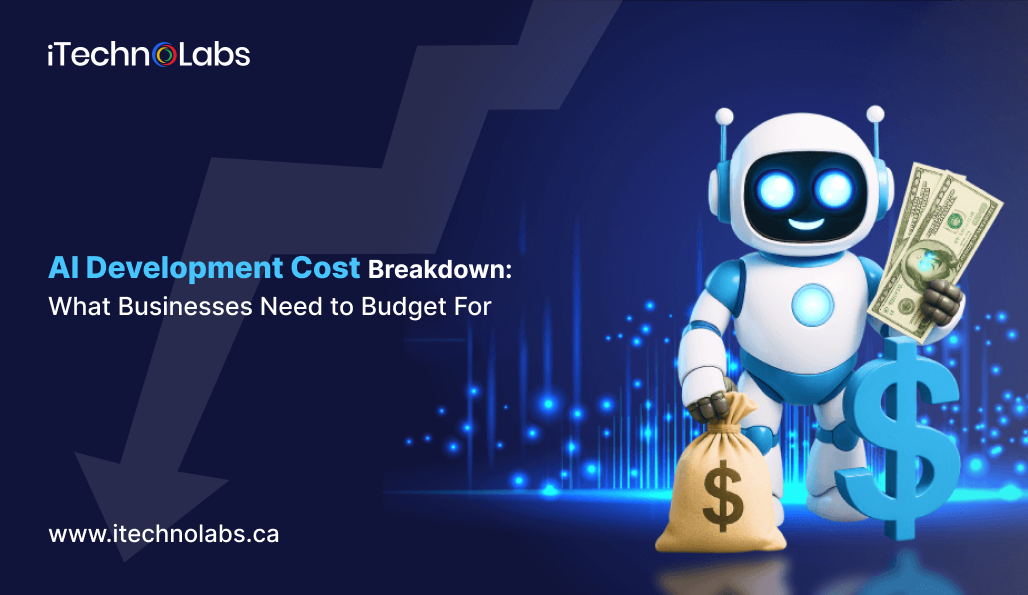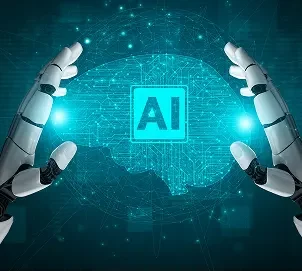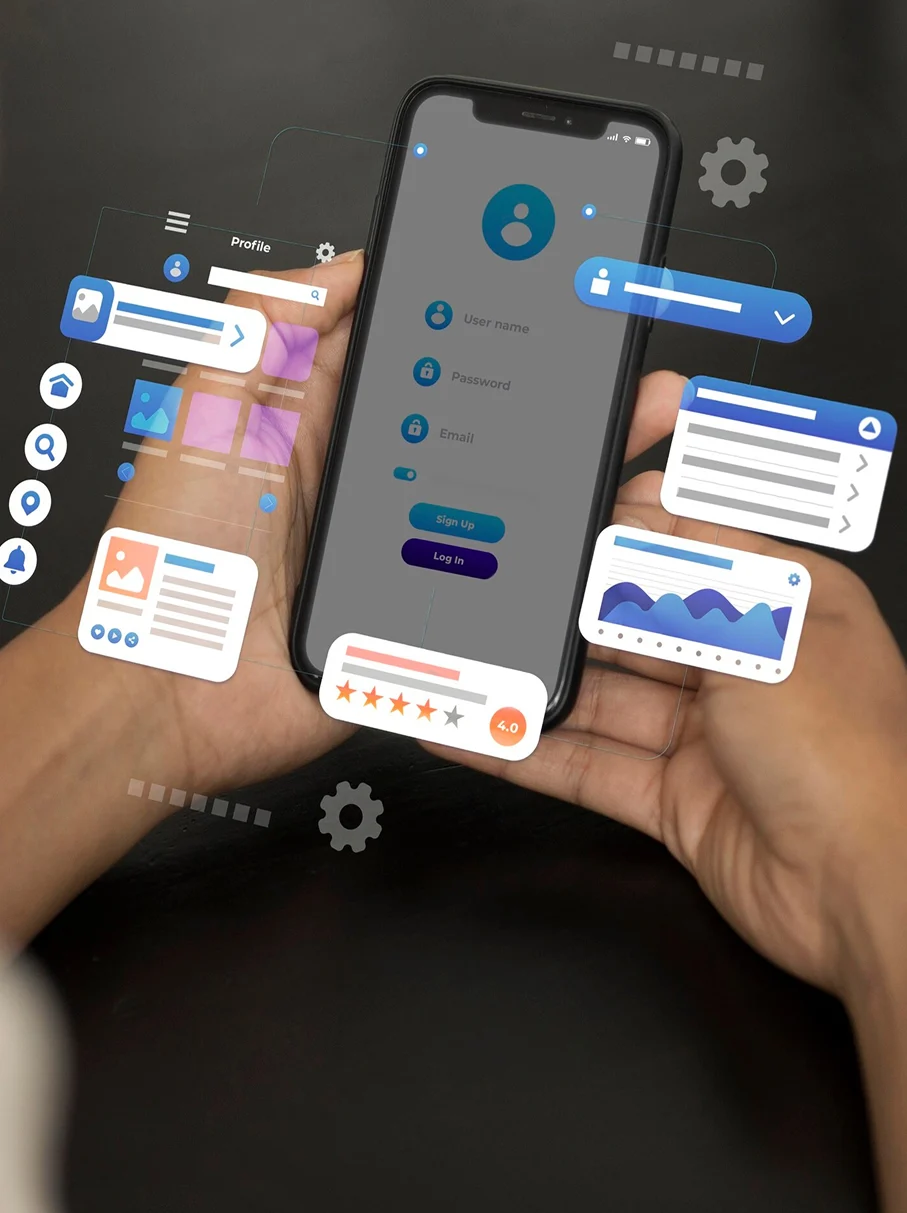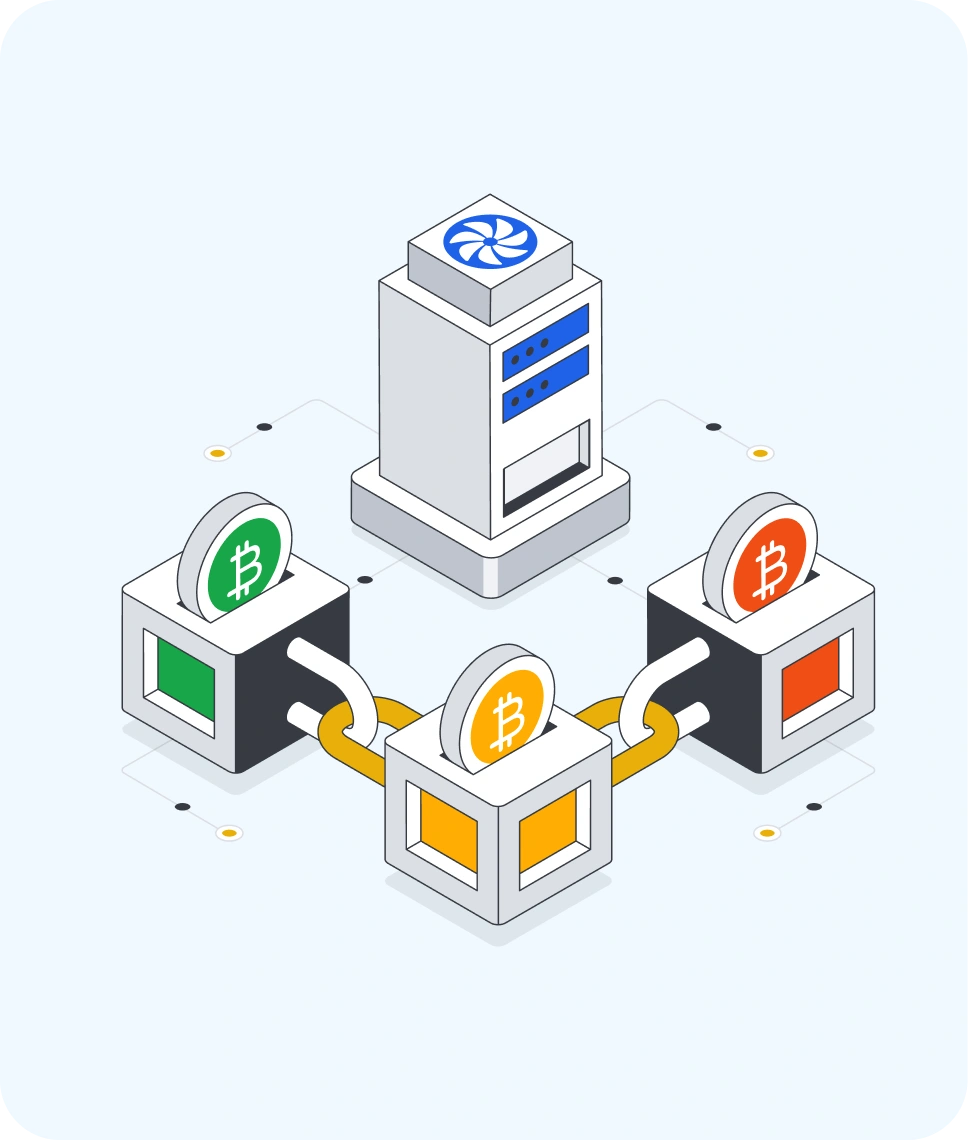Gone is the time when AI was just a buzzword. Today it is the necessity of the world. AI adoption is increasing at a lightning speed across industries. Organizations across sectors are using AI tools to boost productivity, develop new solutions, increase customer satisfaction rate, save time, costs and what not.
If you are also thinking of developing an AI for your business, be it a chatbot, AI agents, or tool, the first question that often comes to mind is what is the actual cost of AI development. The answer to this question is not as simple as you think. Read this blog to learn about the cost of AI development, how it varies and how you can keep it low.
AI Development Cost in 2025
AI development cost depends on the type of project you build. It varies according to the features you want to add and the complexity of the project. Following are some of the AI solutions prevalent in 2025 and what they might cost you:
1. AI App Development Cost
Making an AI-driven app with basic features will cost you between $20,000 and $50,000. On the other hand if you need advanced AI, complex integrations, the cost can go beyond $100,000.
2. AI Chatbot Development Cost
A basic chatbot for answering common questions may range from $10,000 to $25,000. While a chatbot using NLP and custom AI can cost between $30,000 and $60,000.
3. AI Agent and Assistant Development Cost
Personal assistants or AI agents that do repetitive tasks, learn from user behaviour, are quite complex. They usually start at $40,000 and can go up to $100,000 depending on the scope.
4. AI Model Development Cost
Onboarding a fully custom AI model includes stages like data collection, training the model, testing, evaluation, maintenance. Depending on the data required and complexity, this can range between $15,000 and $100,000.
Factors Affecting AI Development Cost
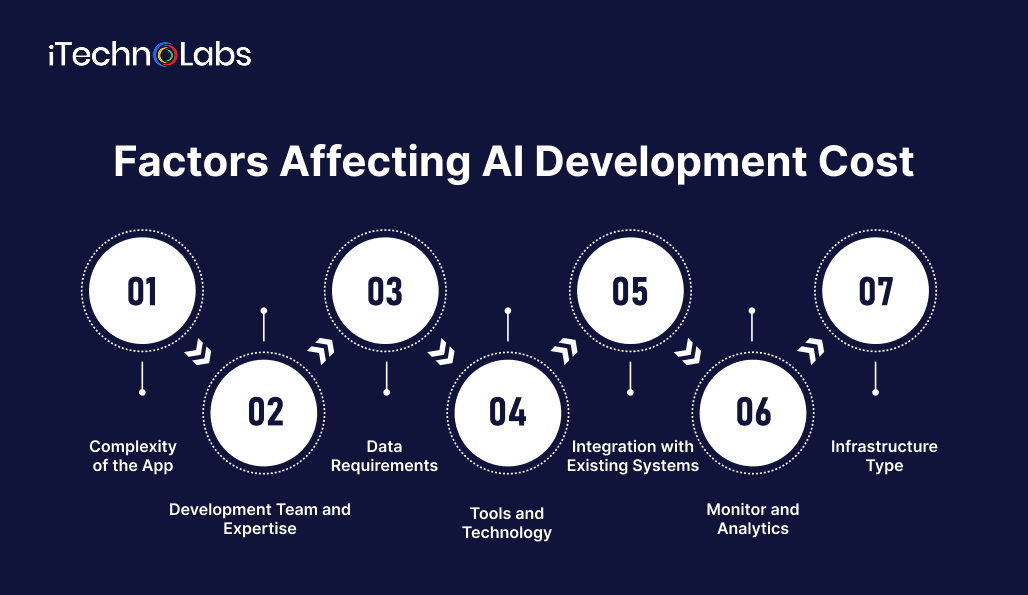
Factors affecting AI development cost extend beyond just the initial investment in technology. Several elements influence the overall budget, such as the complexity of the project, the type of AI model being developed, and the availability of quality datasets for training. The required infrastructure, including cloud services or on-premise systems, also plays a major role. In addition, the expertise of the development team, licensing fees for tools or frameworks, and ongoing maintenance significantly impact cost. Understanding these factors helps businesses plan effectively, set realistic budgets, and achieve successful AI implementation without unexpected financial burdens.
1. Complexity of the App
One of the major factors affecting a development cost is the complexity of the app. An AI app with basic functionalities like chatbot will cost less than an app with advanced integrations and complex features.
The apps which use advanced machine learning algorithms like natural language processing (NLP) naturally become costlier than others.
2. Development Team and Expertise
The size of the team and its expertise is another factor that affects the cost of AI development. A less experienced team might cost you less however it may lead to project failures since they have very less exposure.
On the other hand, a renowned AI development company will provide you with experienced developers who might charge more but will complete the project at most accuracy in less time and no errors.
3. Data Requirements
Data is the core of any AI model. A well-structured, relevant and latest data ensures that the output of an AI app will be reliable and accurate. Following is the breakdown of cost of data in each phase:
- Collecting raw data: $5000 to $20000
- Removing errors: $10000 to $30000
- Giving structure to data: $15000 to $50000
- Storing the data: $5000 to $20000 per year
- Ensuring regular updates: $10000 to $40000 per annum
- Adhering legal and ethical guidelines: $5000 to $15000
4. Tools and Technology
AI development includes various types of tools and technologies such as programming languages (Python, React J.S.), libraries (Panda, Tensor Flow) and cloud platforms (Google Cloud and AWS). Building an AI solution with these technologies can cost between $10,000 and $50,000. Moreover, the cost can even rise further if DevOps tools are used for efficient deployment.
5. Integration with Existing Systems
The next factor affecting AI development cost is to integrate the AI model into existing systems. The integration process involves creating secure interfaces, rigorous testing, and API development.
For example, if you have developed an AI-driven resume parsing features for your existing HRMS solution, the development team will have to deal with the existing infrastructure in place. This complexity might cost you anywhere between $20,000 and $100,000.
6. Monitor and Analytics
Merely just building an AI model is not enough as one also has to keep an eye on it to find areas of improvement and make it better to provide an enhanced user experience. This all comes under monitoring and analytics.
Monitoring helps to measure the app performance and find the functions to be optimized. Further the post development costs can’t be avoided, so one has to consider it while developing an AI model. The monitoring and analytics cost may vary between $5,000 and $20,000 per year.
7. Infrastructure Type
The AI development cost also depends on the type of infrastructure chosen by the service vendor. This differs according to the project’s needs and requirements. Here are some types of infrastructure options available and their average costs:
- Cloud (AWS, GCP, Azure): Under this all data is stored on cloud servers. The billing method is pay as you go where you only pay for the used capacity of the server. As it is a cloud server it is highly scalable and suitable for most cases.
- On-premise: In on-premise infrastructure, all data is stored and on the local servers which are maintained by the organization. The cost here is of hardware and maintenance. It’s highly secure as the organization gets full control over data and infrastructure. It’s best for data-sensitive projects.
- Hybrid: This infrastructure model as the name suggests is a mix of on-premise and cloud. The AI is trained in the cloud while data is processed on-premise by combining local and cloud servers. This strikes a perfect balance between security and AI development cost.
Industry-Specific AI Development Cost
Industry-specific AI development costs vary because every sector has unique requirements, challenges, and compliance needs. For instance, building AI tools for healthcare demands strict data privacy and regulatory adherence, while retail applications focus more on customer behavior analysis and personalization. Financial services prioritize fraud detection and transaction security, which require advanced algorithms and high-end infrastructure. Manufacturing, on the other hand, emphasizes automation and predictive maintenance, influencing costs differently. Factors like training datasets, domain expertise, integration with legacy systems, and scalability also impact pricing. Understanding these distinctions helps businesses plan investments more accurately and maximize AI’s return on value.
| Industry | Example Use Cases | Cost | Timeline |
| Finance | Fraud detection, AI-based loan processing, risk scoring | $100k to $400k | 4 to 6 months |
| Healthcare | Medical imaging, EHR Summarization, patient triage assistant | $150k to $500k | 5 to 8 months |
| Retail and eCommerce | Personalized product recommendations, AI customer report, demand forecasting | $80k to $300k | 3 to 6 months |
| Logistics | Predictive maintenance, inventory demand planning, route optimization | $120k to $350k | 4 to 7 months |
| Manufacturing | Quality inspection with computer vision, preventive maintenance, process automation, equipment failure alerts | 100k to 400k | 4 to 7 months |
Breakdown of AI Costs by Development Stages
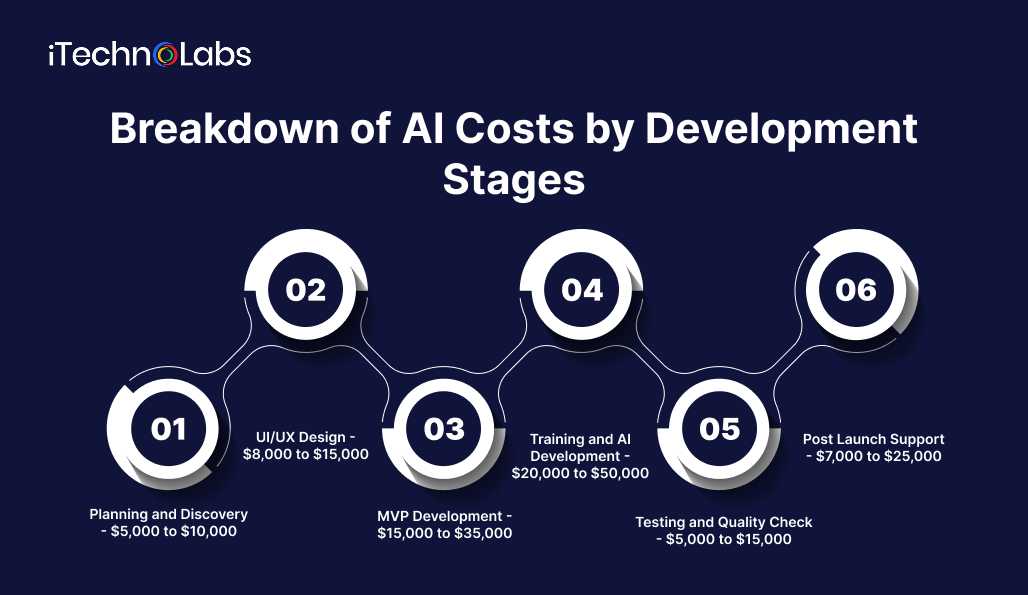
Rather than just knowing a ballpark figure what really will help is to know how much AI development costs at every stage. Whether you are building a basic AI chatbot or a full fledged AI app, knowing the cost involved in every phase will give you a good idea of where your investment is going and help you optimize your budget and expectations accordingly.
Below is a phase wise breakdown of AI development process and how much each stage costs:
1. Planning and Discovery – $5,000 to $10,000
It’s the first step in a successful AI development project. This phase includes many activities that define a project’s scope, feasibility and objectives.
Following are the activities involved in the stage:
- Market research and competitor analysis
- AI feasibility assessment
- Project requirement gathering
- Budget planning and timeline
2. UI/UX Design – $8,000 to $15,000
In this stage of AI development, a blueprint of a solution is created such as architecture, user interface, and algorithms. Here are the key activities of this stage:
- Wireframing and user flow
- High fidelity design mockups
- Design of AI interaction points
3. MVP Development – $15,000 to $35,000
Once the design is ready the next step is to create MVP. Minimum viable product or MVP is the first functional version of the app. It includes all the essential features which will ultimately be in the final version. This is used for early testing and detecting any areas of improvement to ensure the final product is completely ready.
Key activities of this stage are:
- Front-end and back-end development
- Basic integration (APIs, )
- Initial deployment on staging
4. Training and AI Development – $20,000 to $50,000
This is the most crucial phase of AI-driven application. The cost of this AI development phase depends on whether you are using pre-existing APIs or training custom ones:
Key activities are follows:
- Data collection and pre processing
- AI model selection or creation
- Model training, testing, and optimisation
- Integration of AI logic into the app
5. Testing and Quality Check – $5,000 to $15,000
Once the model is trained, it’s time to test it in a real-world environment to find any drawbacks. This stage is crucial to ensure that the model is working perfectly and can be launched in the next step.
Primary tasks in this stage are:
- Unit testing, integration testing
- UAT (User acceptance testing)
- AI model performance evaluation
- Bug fixing and optimization
6. Post Launch Support – $7,000 to $25,000
This is the last and final stage of AI development and it is critical so that the AI model continues to perform at the same level or even better.
Key activities are as follows:
- Monitoring and analytics integration
- Maintenance and model updates
- Post-launch user feedback integration
Continuously updating the AI model is essential to ensure that it remains high-performing.
By distributing your budget wisely across all the different phases, you can utilize resources and save on the cost of AI development.
Important Article: Benefits of AI in Software Development
Hidden Costs in AI Development
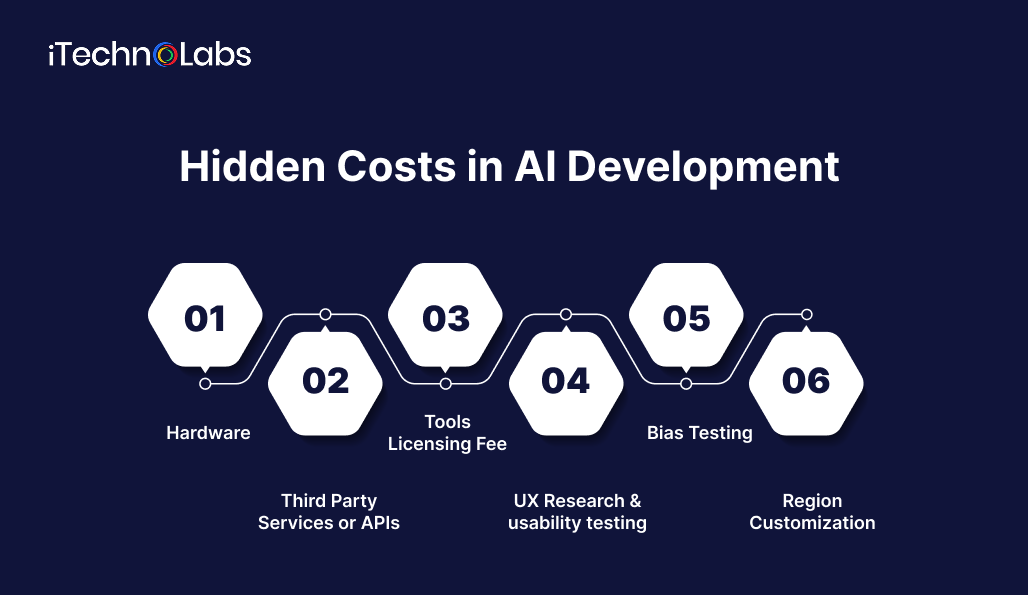
Apart from the basic expenses there are some other hidden factors that can also affect the AI development cost. Overlooking these factors may result in over budgeting therefore it’s important to keep a check on these during the AI development. Here some of the hidden costs that you might miss during AI development:
1. Hardware
AI models, especially the ones made by deep learning algorithms, need hardwares like TPUs and GPUs for training and development. Renting or buying hardware could be a significant cost in AI development.
2. Third Party Services or APIs
Another hidden cost of AI development is using third party services or APIs. While utilizing these can speed up development, they often come with usage-based fees, which can pile up as the app scales or usage increases.
3. Tools Licensing Fee
Many AI tools and platforms often come with a licensing fee which may be monthly or yearly. These fees add a lot to the AI project pricing especially for enterprise level features.
4. UX Research & usability testing
User experience testing makes sure that the app is easy to use and effective. This stage of AI project pricing often requires proper time and resources to collect feedback and make required improvements.
5. Bias Testing
This is a crucial task to do. Bias testing is essential to ensure that the model doesn’t have any kind of ethical or legal issues. This testing ensures that the output generated by the AI model is bias-free and fair to everyone.
6. Region Customization
If you want to add extra languages, cultures, then it will add to the AI project pricing as there is more development work to do.
How to Save AI Development Cost?
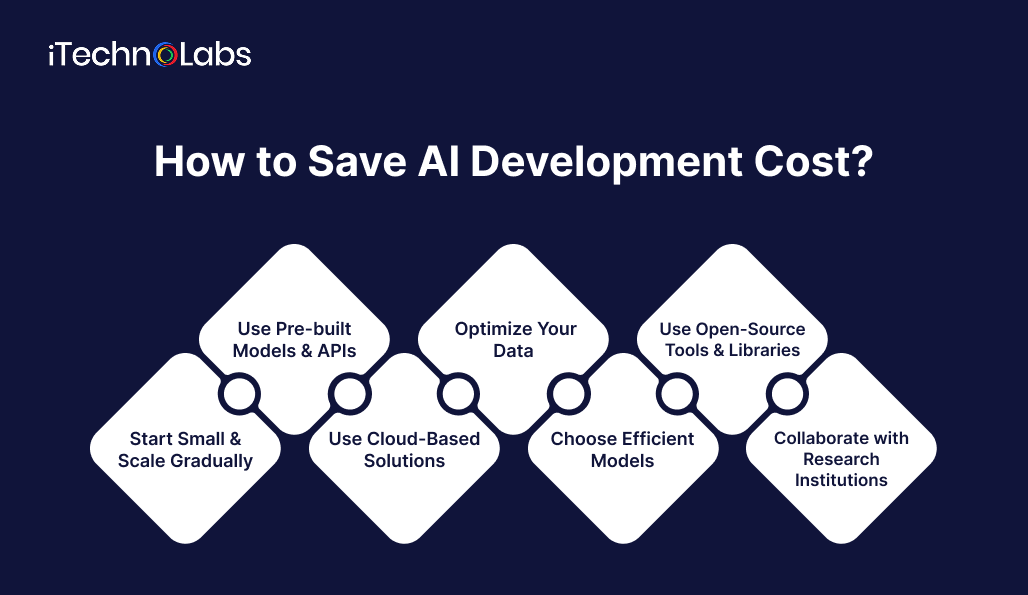
Saving on AI development costs requires a smart approach that balances efficiency with innovation. Many businesses overspend by building everything from scratch or scaling too fast, but careful planning can significantly reduce expenses. The following strategies highlight practical ways to cut costs while ensuring the quality and effectiveness of AI projects:
1. Start Small & Scale Gradually
Begin with a minimal viable AI model rather than building a complex system at once. Focus on core features first. Validate with early users. Once you confirm value and usage, add advanced features or scale model complexity. This reduces wasted resources and avoids over-engineering. Early success helps secure better funding or justify further investment.
2. Use Pre-built Models & APIs
Rather than building AI components from scratch, use existing models or third-party APIs (e.g. TensorFlow, OpenAI, Amazon Rekognition). This saves time and avoids the cost of research, model architecture design, and training huge datasets. Pay only for usage instead of investing in full internal development. Ideal for features that don’t require unique, proprietary algorithms.
3. Use Cloud-Based Solutions
Leverage cloud platforms (AWS, Google Cloud, Azure) to host training, deployment, and model serving. You avoid large upfront hardware costs. Use “pay as you go” pricing to scale resources up or down based on needs. This flexibility prevents overprovisioning and under-utilization. Also offloads maintenance, power, and infrastructure costs.
4. Optimize Your Data
Collect only the data relevant to the specific AI task. Clean and preprocess data well to reduce noise and biases. Label data carefully. Eliminating unnecessary or low-quality data speeds up training and reduces compute costs. Smaller, high-quality datasets often outperform bulky, unfiltered ones. Better data means fewer retraining cycles.
5. Choose Efficient Models
Select models that deliver acceptable accuracy with lower computational cost. Use smaller or distilled models instead of large, power-hungry architectures where possible. For example, in NLP tasks, consider models like BERT variants rather than always using GPT-4 or similar. Efficient architectures reduce training time, inference cost, and cloud/hardware expenses.
6. Use Open-Source Tools & Libraries
Employ well-maintained open-source frameworks (e.g. PyTorch, Keras, scikit-learn). They offer community support and mature tools without licensing fees. For many use cases open-source is sufficient. You reduce costs tied to proprietary tools or vendor lock-in. Also accelerates development since many components are pre-built or modular.
7. Collaborate with Research Institutions
Partner with universities or AI research labs. They often have access to specialized personnel, infrastructure, and grants. The partner may share both the cost and risk. You can use their lab resources (hardware, datasets, expertise) cheaper than building everything in-house. Also opens opportunities for innovation and academic publications, boosting credibility.
Suggested Article: AI in Surveillance System
Conclusion
The cost of AI development depends on several factors such as complexity of the app, the expertise of the development team, infrastructure type, data requirements, tools and technology used, and many more. After considering all these factors one gets the idea of how much it will cost to make an AI agent, tool or chatbot.
The AI project pricing can easily shoot up, for which you can use the tips mentioned in the blog such as starting small, using pre-built models, utilizing cloud-based solutions, optimizing the data, choosing efficient models, and using open-source tools and libraries.
Building an AI app yourself can be complex, time consuming and costly. The best way is to outsource this to a reliable AI development company. iTechnolabs is a nine year old AI development company with 230+ members and 840+ projects delivered successfully. Visit the website now, discuss your requirements and get the AI model that matches your needs at an affordable price.
FAQs
1. How much does AI development cost?
The cost of a development depends on various factors such as complexity, teams’ expertise, data requirements, tools and technologies, monitoring and analytics, infrastructure type and more. However a basic AI app might cost you between $20,000 and $30,000.
2. What is the budget of AI development?
The cost of a development depends on the type of project as follows:
- Basic project – $5,000 to $10,000
- Mid level project – $100k to $500k
- Large scale systems – Above $500k
3. How much does ChatGPT cost?
ChatGPT comes with a free version that allows you to do basic tasks like finding answers to questions, writing codes, designing pictures, etc. However, it has a paid plan also known as ChatGPT go which comes at $4.54 per month and provides everything in the free plan along with advanced data analytics, more memory.

